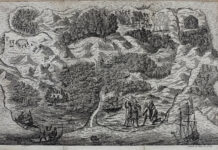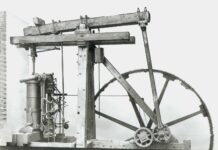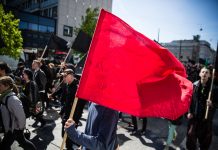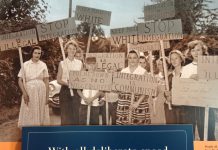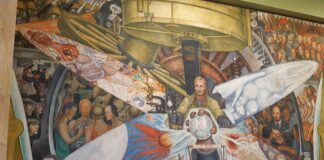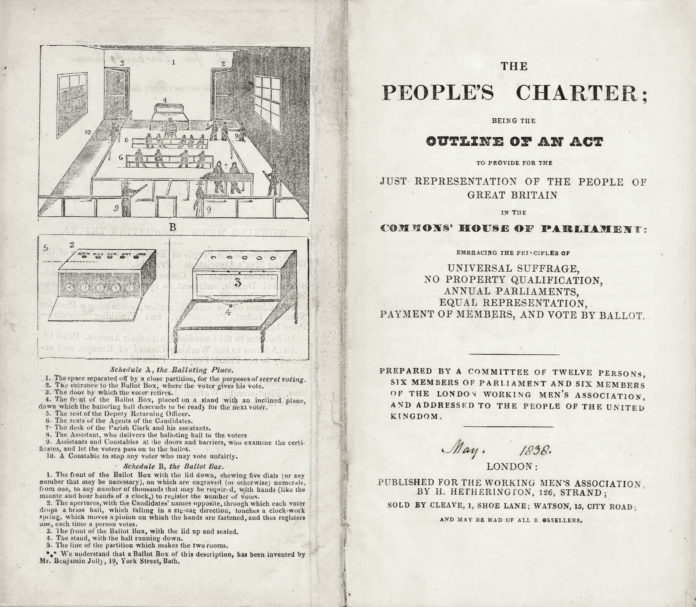
Socialistisk Biblioteks Tidslinje med links til begivenheder og personer i 1838.
Se også Index over personer, organisationer/partier og værker (som bøger, malerier, mm.), steder, begivenheder, mv., der er omtalt på hele Tidslinjen, titler og indhold på emnelisterne osv.
21. maj 1838
Den første britiske massebevægelse af arbejdere (forløber for arbejderbevægelsen) vedtager “People’s Charter” på møde i Glasgow, med krav om udvidelse af demokratiet i et 6-punkts program.
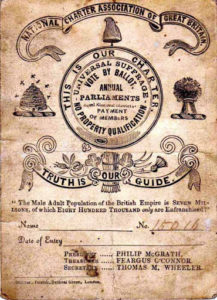
Leksikalt/Encyclopedias
- Chartistbevægelsen. Af Einhart Lorenz (Leksikon.org)
- Chartistbevægelsen (Denstoredanske.dk). Kortere leksikonartikel.
- Chartism (Wikipedia.org). Længere engelsk artikel om Chartist-bevægelsen.
- The Chartists (Marxists Internet Archive: History Archive: British History). Documents incl. Marx & Engelsk on the Chartists
Sites:
- The People’s Charter (Britisk Library; Chartists)
- Where History Happened: Chartism (Historyextra.com)
- Chartist Ancestors (Chartists.net)
Artikler/Articles
The revolutionary tradition of the English working class (Counterfire, August 10, 2022). “This weekend the Yorkshire town of Halifax commemorates the great strike of 1842 organised by the Chartists. John Westmorland looks at this movement and its lessons for today.”
Chartist Revolution. By Dominic Alexander (Counterfire, September 23, 2021). Review of Rob Sewell, Chartist Revolution (Wellred Books, 2020, 413 p.). “… an important history of the world’s first working-class political movement, shows its relevance to later revolutionary struggles.”
Chartism: the first great working class movement (Counterfire, May 1, 2021; first published 2011). “Chartism was a mass movement for political and social change in the 1830s and 1840s – John Westmoreland looks at the crucial lessons it provides for activists today.”
The chartists (Socialism or your money back, May 8, 2013). On the radicalism and folded arms-theory of the Chartists.
1. The Chartists: A militant struggle for the rights of workers (Issue 2029, 2 December)
2. The Chartists turn left after the defeats of 1848 (Issue 2030, 9 December)
3. The Chartists remain an inspiration for the fight for freedom now (Issue 2031, 16 December)
The origins of the Labour movement. Part 51 in Neil Faulkner: A Marxist History of the World (Counterfire, 31 October 2011)
The Dignity of Chartism. By John Westmoreland (Counterfire, November 19, 2015). Review of Dorothy Thompson’ book (Verso, 2015, 334 p.)
Chartism’s hidden history. By Judy Cox (International Socialism, Issue 114, April 2007). Review of Keith Flett, Chartism After 1848: the Working Class and the Politics of Radical Education (Merlin Press, 2006).
See also Review by David Renton + Response by Keith Flett (Reviews in History, December 2009)
Peter Murray McDouall and ‘Physical Force Chartism’. By Ray Challinor (International Socialism, Issue 12, Spring 1981, p.53-84; online at Marxists Internet Archive)
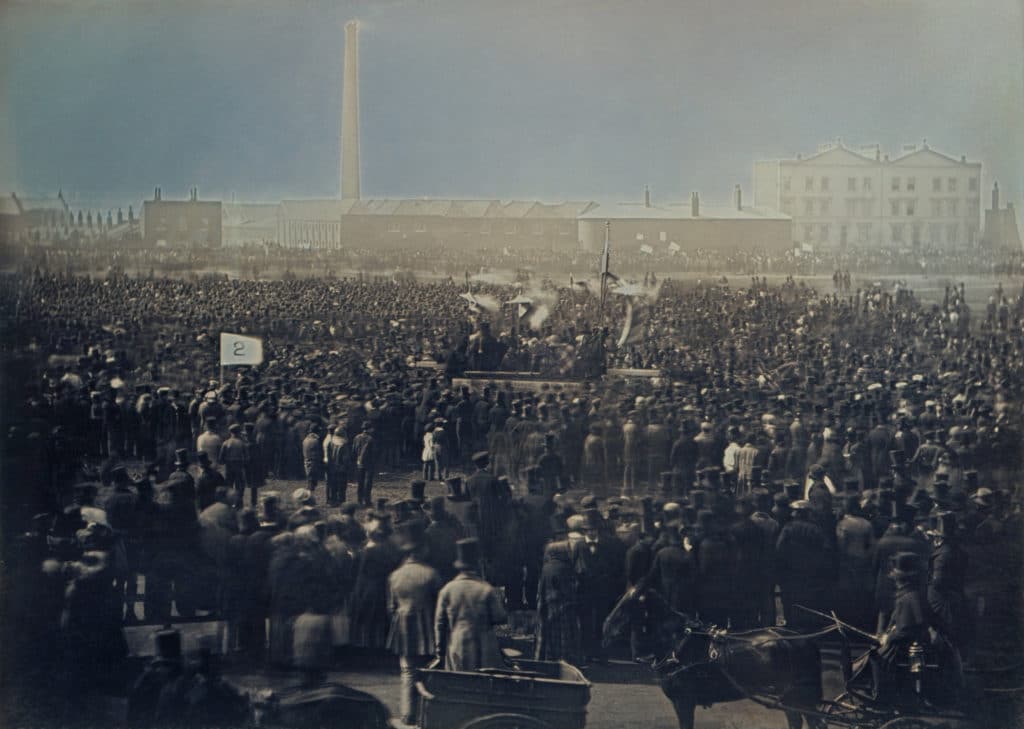
Se Tidslinjen for sidste charter, 10.april 1848
See on the Kennington Common Mass Meeting 10th April, 1848 (Spartacus Educational)
The Mass Meeting at Kennington Common: 10 April 1848 (The History Student)
















